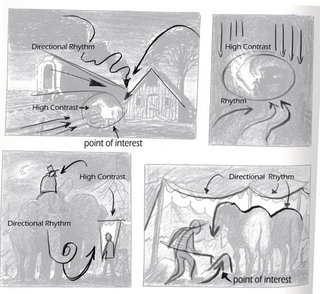There's a common problem that occurs when we sketch too quickly or we're just not paying attention. The neck/chest connection just doesn't quite cut the mustard. It happens to me often in the early stages of the gesture and I usually try to catch it and fix it.
The circumference of the neck starts at the clavicle and connects to the back spine of our bodies( obviously we all know that). But many times when we caricature we draw the neck lines right on top of the shoulder line. It runs the risk of having tangents in the drawing and thus flattening out the pose. That neck needs some sense of overlapping shapes to help make it feel connected to the body in a natural way.
I sketched out the examples for this with one of my students and the T-shirt analogy came up. If you look at your shirt you'll see that the hole for your head comes out of the front, not the top where the shoulder seam is. Also, clothing has all the gesture lines we need to help guide us in the line work. Use the collar, use the seams, use whatever it is on that clothing to reveal the form. It's all overlap, and it is needed, unless you really want a flat looking drawing. Even those who draw in a so-called "flat" design style make use of these principles. Shane and Shannon, for instance, use overlap beautifully to show the forms working together, as well as staying completely away from tangents! They're super good!
Down below I threw in a couple of drawings I liked, just for fun.
Hope all's well......

































































